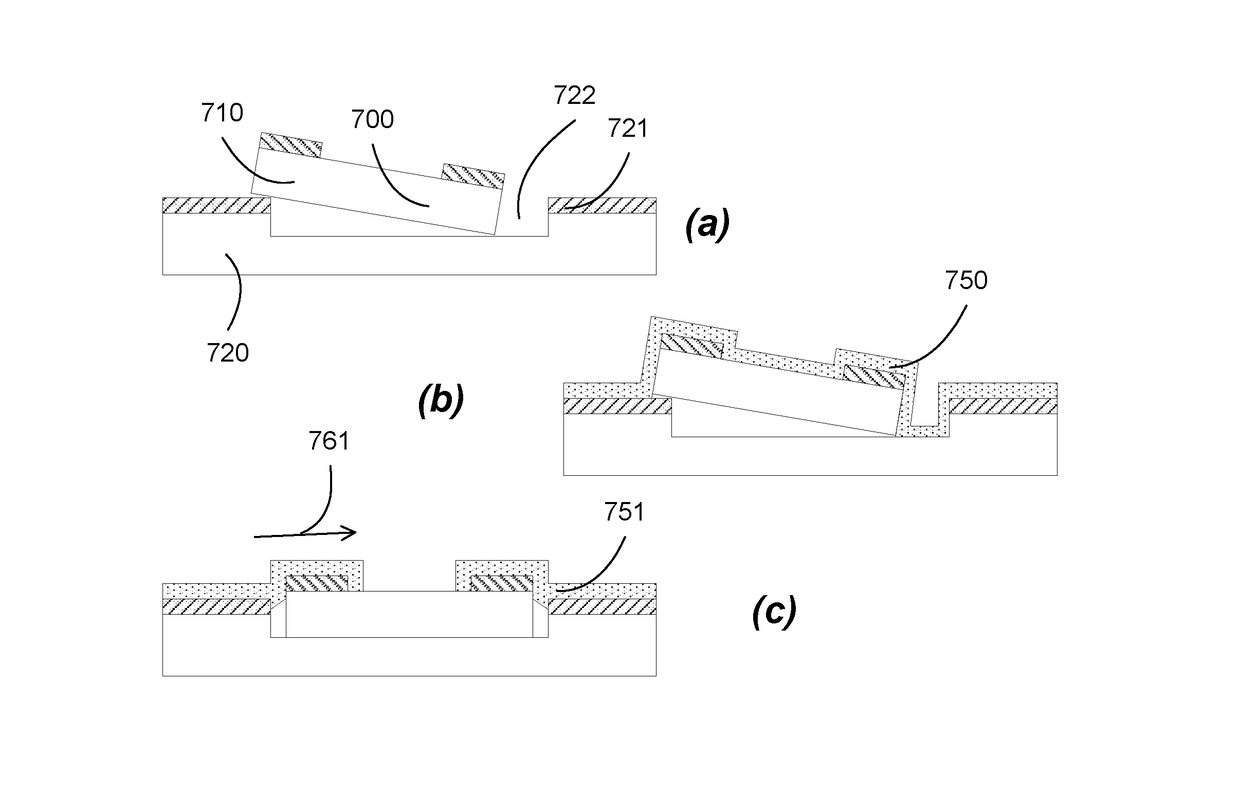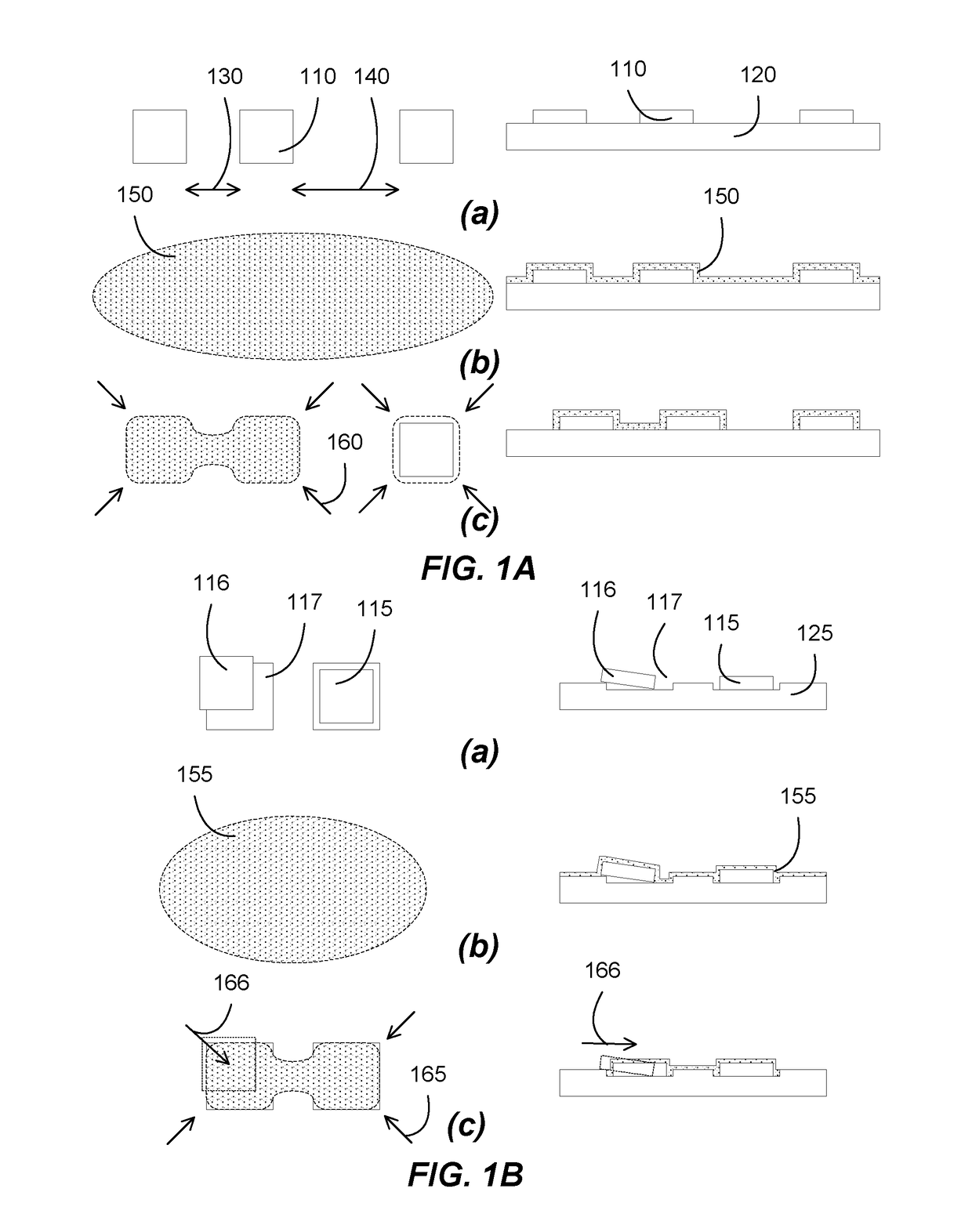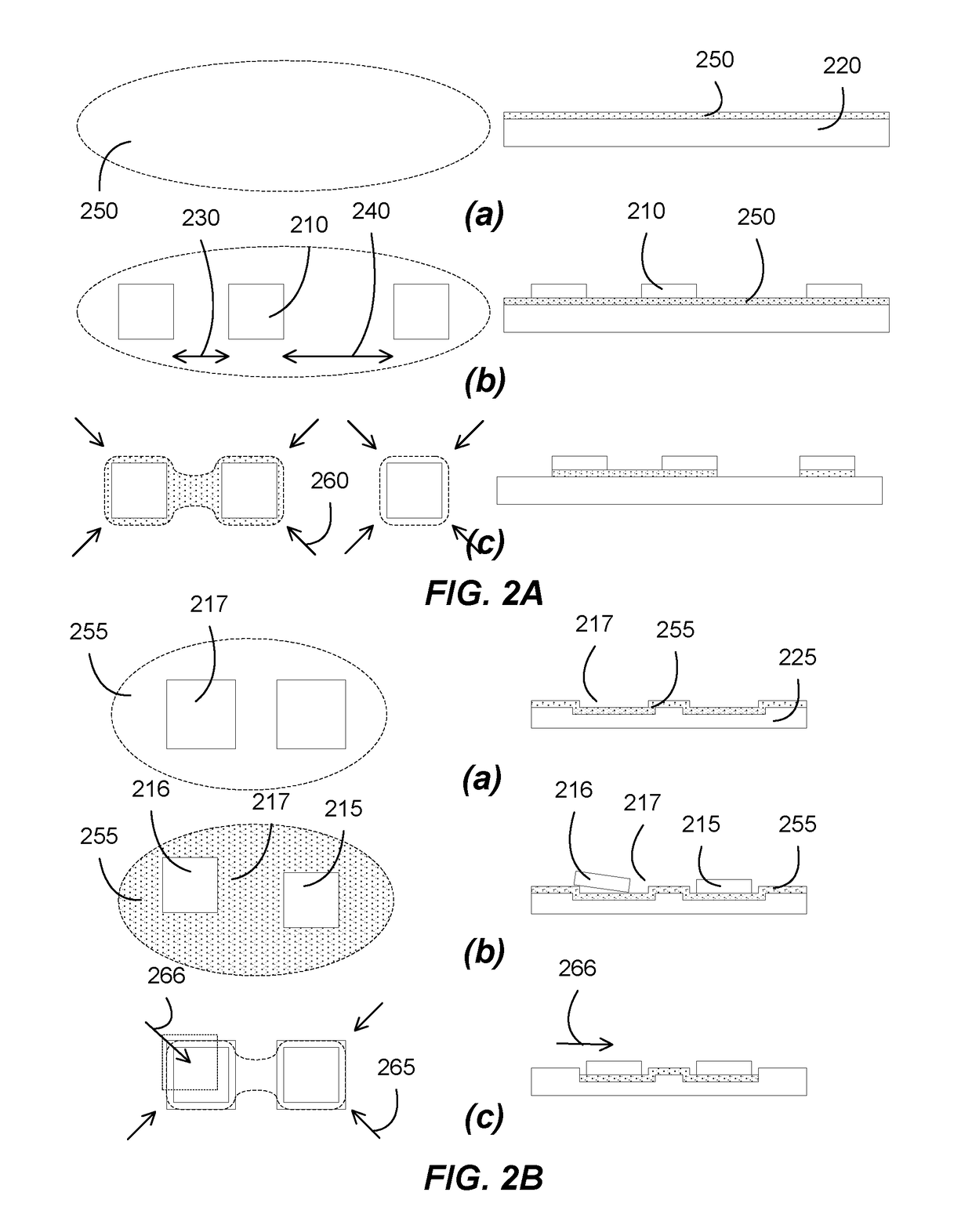Massively parallel transfer of microLED devices
- Summary
- Abstract
- Description
- Claims
- Application Information
AI Technical Summary
Benefits of technology
Problems solved by technology
Method used
Image
Examples
first embodiment
[0067]For the first embodiment, the microLED devices need to be oriented with their bond pads all pointing downwards, facing the terminal pads on the circuit board. When the devices are placed with the bond pads oriented downwards, they are in a flip chip attachment in approximate alignment with corresponding terminal pads of the board. The solder layer can be first placed on the circuit board, followed by the microLED devices on the solder layer with the bond pads contacting the solder layer. When the solder reflows, it will melt and coat the copper terminal pads and the nickel bond pads, simultaneously aligning them with each other, because of the surface tension of the solder.
second embodiment
[0068]In the second embodiment, the microLED devices can be oriented with their bond pads pointed upwards. The solder layer can be provided after the microLED devices are placed on the circuit board. Once the microLED devices are properly positioned with this upward orientation, the thin film of solder is formed on the circuit board. When the solder is melted, it can reach up to the nickel bond pads to complete the interconnection between the bond pads and the terminal pads.
[0069]In both cases, the solder wets the circuits and also de-wets from the bare areas of the circuit board (where there are no contact pads) which can easily be removed. For example, the excess solder can balls up and can be removed with air, water or ultrasound.
[0070]In some embodiments, the methods uses wave soldering process with a thin film of solder instead of a solder bath. The technique of Wave Soldering uses a molten solder bath. A circuit board is passed, upside down, on top of the molten solder, so tha...
PUM
 Login to View More
Login to View More Abstract
Description
Claims
Application Information
 Login to View More
Login to View More - R&D
- Intellectual Property
- Life Sciences
- Materials
- Tech Scout
- Unparalleled Data Quality
- Higher Quality Content
- 60% Fewer Hallucinations
Browse by: Latest US Patents, China's latest patents, Technical Efficacy Thesaurus, Application Domain, Technology Topic, Popular Technical Reports.
© 2025 PatSnap. All rights reserved.Legal|Privacy policy|Modern Slavery Act Transparency Statement|Sitemap|About US| Contact US: help@patsnap.com



